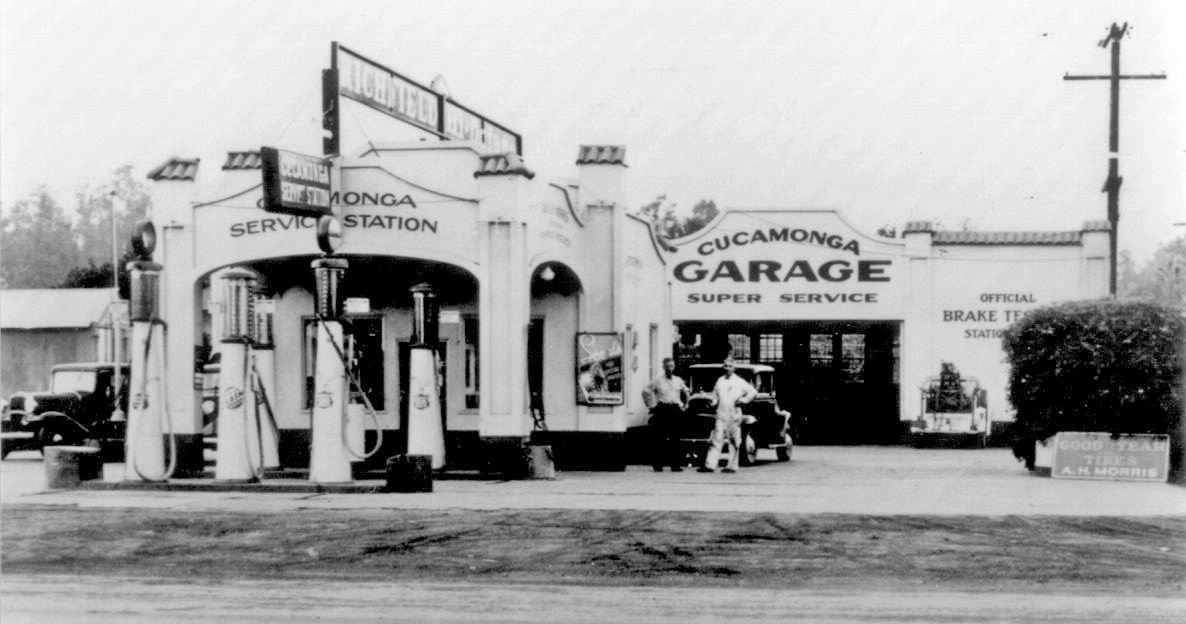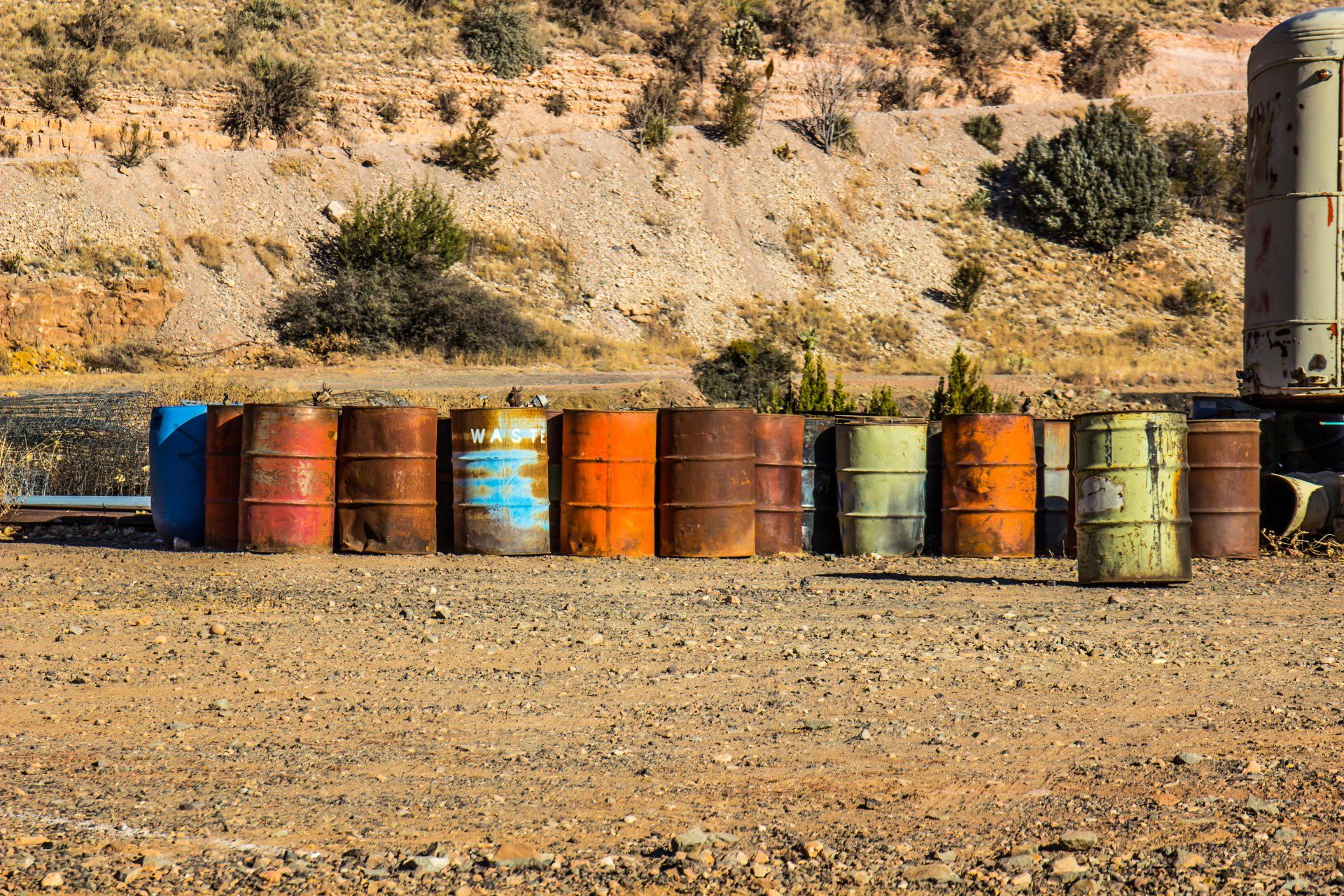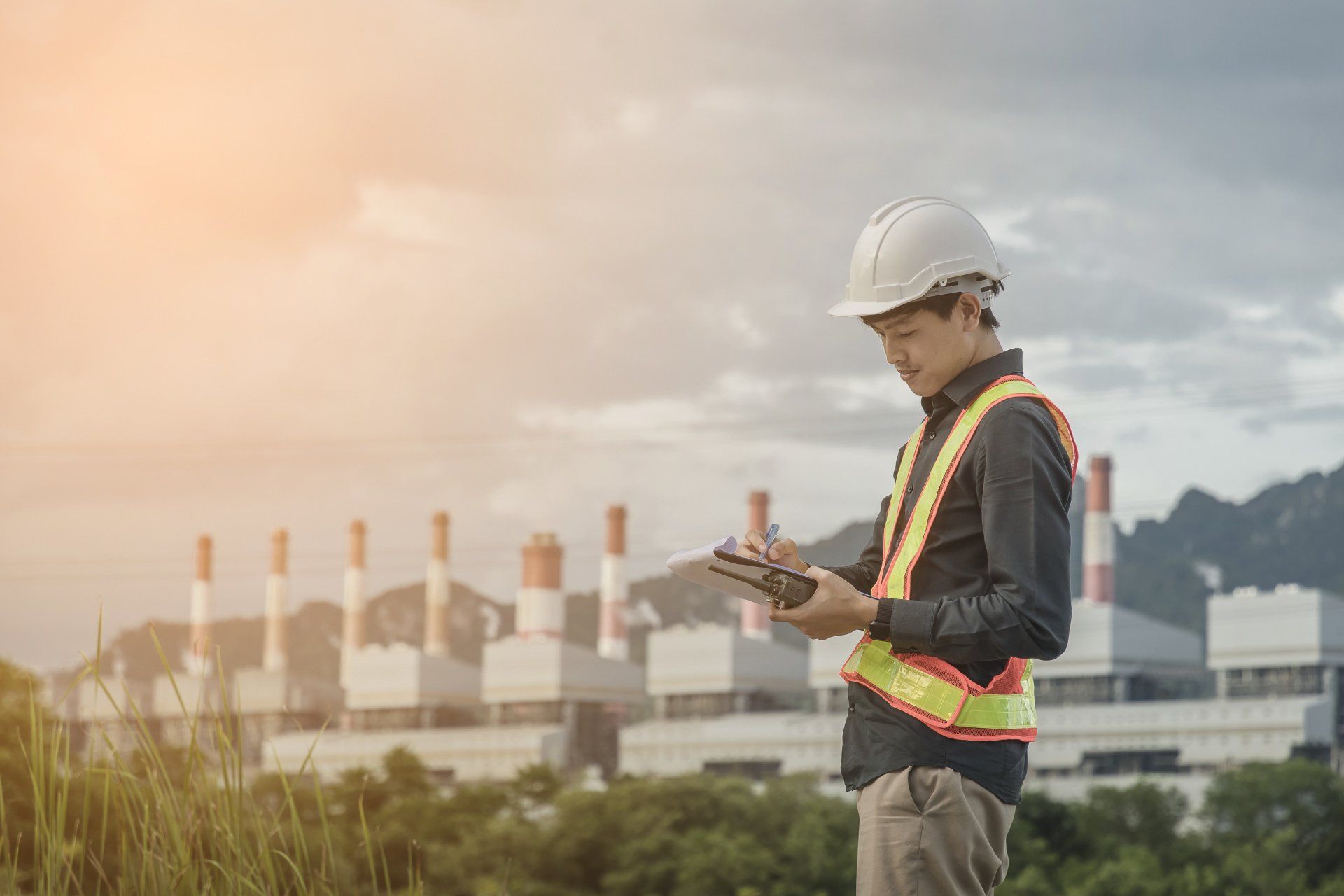Blog

In the 1930’s through the 1970’s, there were “Mom & Pop” service stations all over California. These were during years when there were no government controls in place for storing, dispensing, or handling of petroleum fuels. Fuel storage tanks were made from thin single-wall steel cylinders that were buried with their tops about 3-ft. below ground surface. Most underground (UG) service station tanks were 8-ft. in diameter and 27-ft. long (holding 10,000-gallons each). Stations carried 2-grades of gasoline (regular and ethyl), requiring 2 tanks. Some also carried diesel fuel - requiring a third tank. Many had smaller (+-500-gal.) waste-oil holding tanks for vehicles they serviced with oil changes. Keep in mind as you read on, that; there were no government rules during this period regarding how long a fuel tank could be kept in the ground, or when it should need replacing. Single-wall steel tanks, and their single-wall piping, of course, rust through and fail over time when exposed to the moisture and electrolysis that occurs in the ground. The “average” life expectancy of single-wall steel underground fuel tanks before they start leaking is 15 to 25-years. It was during the late 1960’s that some water wells in Southern California began smelling and tasting like gasoline. The first one that got significant attention was a “Forest Lawn” drinking fountain. Without getting into details, scientists investigated and estimated that between 100,000 and 250,000-gallons of gasoline may have leaked from somewhere into the groundwater in that area. The estimates could not, however, be substantiated. Of course, this caused more water well investigations in the state over the next 10-years, through the late 1970’s. In the early 1980’s, tank integrity leak testing became required for underground fuel tanks in California. If a tank was found to be leaking, subsurface studies were required to determine the extent of the leakage. Early on, It was the responsibility of the Property Owner to; 1) remove and dispose of the leaking tank(s); 2) delineate (determine) the areas of soil and groundwater that were affected, and; 3) take responsibility for cleaning-up the problem. Here’s where you may want to hold your breath… By about the mid-1980’s, 55,000 underground fuel tanks in California were found to be leaking! You can only imagine the costs required to do these three things. Even in the 1980’s, the costs for this very precise scientific work could easily be in the hundreds of thousands of dollars, and in many case even millions! You might imagine what happened next. The “Mom & Pop” service station properties in that era simply weren’t worth more than $200k or $250k. So, what were many forced to do? Bankrupt. The Property titles and ownership went right back to the banks who had financed the Properties. And this was not just only the “Mom & Pops”, but also a large percentage of the businesses who had fuel tanks at their Properties – like trucking companies, and others. Literally thousands of properties ended up in the hands of the banks. And who were then the responsible parties for the clean-ups? The banks, of course. Almost all banks immediately adopted policies to never finance a Property with a fuel tank history unless and until it could be proven that there was absolutely no leak history and no subsurface petroleum contamination present at the site – with no exceptions. And this, friends, is where Phase I ESAs began. 35-years later, not one major bank in America that we know of has canceled or reduced the Phase I study requirement - to this day. What has happened is that their scope has been extended far beyond just underground fuel tanks, and now encompasses many other sources of subsurface contamination. This includes; dry cleaners, early auto repair facilities, electronics manufacturing, early off-set printing companies, and other businesses who commonly used hazardous materials. But it was the California underground fuel tank Government regulations that started it all, and created the Phase I ESA requirement by almost all banks – which still persists today across the country. The California Cleanup Fund (CUF): Of course, the banks (and others) lobbied heavily for the state to create a program that would aid Responsible Parties (RPs) for the cost of cleaning up the thousands of petroleum contaminated sites. In 1989, the California Underground Storage Tank Cleanup Fund Act (CUF) was created by the California Legislature. The CUF is funded by a fee (tax) that is collected by the CUF on all fuels that go into underground tanks, and provides reimbursements for most of the costs required for site clean-ups. The only costs that are not covered by the CUF are those associated with the actual tank removals and disposals. The taxation for the CUF began in 1991 and currently generates about $180m annually. There you have it, friends. We hope that this has helped enlighten your understanding of Phase I ESAs. Contact us with any questions or help that you need. Silicon Valley Environmental Group, Inc. DBA: Phase-1 Environmental Services Stuart G. Solomon, President (831) 422-2290 – Office www.sveginc.com

In general, there are four parts of government who control, manage and oversee Hazardous Materials use, storage, handling, and clean-ups; 1) The EPA (Environmental Protection Agency, which is a Federal Agency); 2) The state of California Department of Toxic Substances Control (DTSC); 3) The California Water Board, which consists of nine Regions (RWQCBs), and; 4) the local County Departments of Environmental Health or Fire Departments who make up California’s Certified Unified Program Agencies (CUPA). The California Air Resources Board (CARB) also plays a role when it comes to air emissions resultant from some remedial actions and technologies. Depending on which City and County your Property is in, one of these four agencies will oversee your project as the “Lead Agency” responsible for taking your site through the required steps and directing the processes. You will need to appoint a qualified Environmental Consultant or firm to represent and guide you through the processes. The consultant will develop and negotiate the clean-up methods on your behalf with your Lead Agency. In some cases, you can choose to go directly to the RWQCB or DTSC for direct oversight, rather than the local CUPA Agency. Regardless, an official “Case” must eventually be opened, and the agency who heads up the case will charge for their time to oversee and manage it. There are reimbursement “Funds” and “Grant Programs” that exist in California where individuals and businesses can apply for aid to help pay for some or all of the costs associated with many site clean-ups. We discuss these in Section G) of this outline. The Required Steps: A) Discovery & Recognition A-1) Initial Phase I and II Investigations These are the two initial discovery studies that identify the environmental problem(s) or condition(s) that exist on a Property. Potential problem(s) on a site are usually identified during a Phase I Environmental Site Assessment. Phase I’s are environmental due diligence studies that are required by almost all Banks and Financial Institutions before they will loan $$ on commercial or industrial Properties. The Phase I study must look for and identify what are called “Recognized Environmental Conditions” (RECs). This term comes from the EPA and the “American Society for Testing and Materials” (ASTM), who’s Standards dictate how a legitimate Phase I study must be performed. If the Phase I identifies or suspects a REC, in most cases, a Phase II (subsurface) Investigation must be prescribed in order to verify or disprove the REC. A-2) Environmental Screening Levels (ESLs) Phase II’s must look and test for potential “Chemicals of Concern” (COCs), which could be in soil, groundwater, or in the form of soil gasses (vapors) beneath the Property. The Governing Agencies have established and published what are called “Environmental Screening Levels” (ESLs) for nearly all COCs. ESLs have been established for almost all chemicals under all possible conditions, including; a) Property use (Residential vs. Commercial/Industrial); b) where they are (in soil/groundwater/soil vapor, etc.) and; c) how deep and what conditions they are in. The established ESLs are the maximum concentration levels of the chemical that is permitted – above which additional action or study is required. If the testing shows that the COCs are below ESLs, the site can be cleared of environmental concern. If chemicals are detected that are above the published ESL(s), additional investigation is generally required to determine the level of risk to human health, and/or the environment. A-3) Determine The Responsible Party (RP) and Open a “Case” In some jurisdictions of California, it is necessary to obtain permits for all Phase II studies with the agency responsible for environmental management and oversight. By doing so, the consultant is often required to submit the Phase II findings directly to the agency when their work is completed. There are also Cities and Counties where this is not required. In those where it is, many will automatically “Open” a case if any ESL(s) in the samples were exceeded. In these cases, the Property owner or “Responsible Party”, (RP) will likely get a letter from the agency advising them that a Case needs to be opened and that additional study needs to be performed. If there is no response from the RP, the situation can escalate – some quicker than others - depending on the severity of the contaminants on site, and the agency’s perception of risk. In areas where reporting the results is not required, the RP has a choice, and depending on the severity of the problem, they may wish to wait until the various avenues for addressing the problem(s) are completely understood. The environmental consultant is usually the best source for this education. But be aware that if the problem is, or could be severe, the Property owner (and/or RP) is subject to potential liability, and it would be advisable to get advice on from his or her attorney concerning this. The other item to be aware of is that; if the work was performed by a “Registered Professional” (like a Professional Geologist or Licensed Engineer), that person’s license could be in jeopardy if he or she does not fully advise the Client to report the findings to the appropriate agency(s). What we mean is that; one should never wait indefinitely to report a problem if it is known that action must be taken to protect the health and safety of the Property occupants, its visitors, or the environment. B) Delineation B-1) The Second Study The initial Discovery & Recognition Step A Phase II does not generally provide enough evidence to adequately determine the extent and areas of where the problem exists. Step B is to fully delineate the vertical and lateral extents of the contaminant(s) by testing outward and downward from where elevated contaminant(s) were originally detected. The 2-dimentional “picture” from Step A is reviewed, and additional samples are collected from areas around and beneath where there were elevated detections in Step A. This second study is more extensive than the original because it needs to determine (as accurately as possible) where the affected area(s) begin, and end – both vertically and laterally. Ideally, we want to know the exact boundaries, however, fairly accurate predictions can be made by comparing sample concentration variations across the vertical and lateral distances between the Step A and Step B samples. Sophisticated field test equipment is sometimes used to help determine where and what depths the Step B samples will be collected from. B-2) Creating The 3-D Picture When the collected samples have been laboratory analyzed, a scaled 3-dimentional “picture” of the affected area(s) can be drawn, outlining (as accurate as possible) where it is believed the actionable COCs are positioned, and what their estimated volume is. And while this “picture” may not be totally accurate, it should be close. C) Modeling Remediation Scenarios C-1) Calculating and Evaluating Remedial Options Having the 3-D “picture” from Step B allows modeling and calculations to be created concerning concentrations and volume. It may be necessary to add a few more sample points, based on this data, and incorporating known soil conditions, calculations can be made concerning the methodology, time, and effectiveness of various remedial actions and/or mitigations that are available. With these calculated and estimated, the consultant and RP can discuss which scenario is most suitable for their operation – based on the conditions. A proposal for the agreed-upon remediation is then officially written and submitted to the Oversight Agency for their approval. This could, of course, require modifications as directed by the agency. D) Applying The Remediation Method(s) D-1) Making the Property Safe to Occupy Depending on the site conditions, making the Property “safe to occupy” during the remedial work may be necessary (for example in cases where elevated soil gas vapors from beneath are intruding into the building). Testing the indoor air could be required if certain ESL levels were exceeded in the Step A and B Phase II studies. There are several effective “temporary” methods for rendering the indoor air safe to breath which are not very invasive nor expensive to install. These can buy time necessary to accomplish the required remediation - while keeping the building(s) occupied and its indoor air safe & healthy. These systems include installing portable air filtration units which filter and remove the Volatile Organic Compounds (VOCs) or retrofitting existing building air handling systems with special filters that can do this. D-2) Initiating the Approved Remediation The remediation method(s) chosen which have been agency-approved are then initiated. If contaminants are “marginal” (only slightly above ESLs), there are some quick solutions which can be applied that take as little as 1 to 3 months to bring contaminants to below ESLs. For example, in the case of soil gas vapors; portable truck-mounted high-volume vapor extraction systems can be employed. Other “passive” soil gas systems include; installing slotted well pipe vents into the affected areas and allowing vapors to passively escape through the roof-top(s) over a number of months. Small suction fans can be added to the vents to aid and speed this process. There are many other effective methods including in-place treatment of affected soils and/or groundwater, carbon filtration, and more. Which models are used primarily depends on what the RP desires, needs or wants (ie; a quick, medium, or longer-term solution). E) Verification of Remedial Results E-1) Periodic Testing, Inspections, and Effectiveness Graphs Whichever remedial approach is elected, it must be proven that its application is successful at removing or reducing the COCs, and eventually getting them to below ESL levels. This requires ongoing periodic inspections, re-testing of the affected areas, monitoring of wells or vapor points, and keeping the regulatory agency(s) informed and up to date with official, comprehensive progress reports. The frequency of the ongoing testing often starts out being Quarterly (every 3-months), and then goes to semi-annual (every 6-months). What determines the testing frequency are demonstrations of the effectiveness of the treatment(s). This is done by the Consultant producing graphs showing contaminant level changes between sampling events - over time. The people who perform environmental work on sites that are under regulatory agency oversight must be registered Professionals or working under the direct supervision of a registered Professional. F) Applying for Case Closure or a No Further Action (NFA) Status F-1) Different Methods to End/Stop Remediation When the site clean-up measures are proven to have effectively reduced the contaminants to below ESL levels, an argument and request for Case Closure is presented to the Oversite Agency. Some sites might be issued a “No Further Action” (NFA) Status while leaving some chemical concentrations in the soil, soil gas, or groundwater that are still above ESLs. Most Chemicals of Concern (COCs) originate from “Organic” compounds. This means that; in conditions where there is adequate oxygen, microbes, and nutrients, the COCs will “naturally” decompose and degrade - by themselves, over time. If this argument can be scientifically modeled and presented to the Oversight Agency, a NFA Status can often be achieved. The NFA Status of this type usually carries with it restrictions like, for example; the Agency must be notified and approve future subsurface construction or excavation(s) that are planned at the site. Their approval may require another round of soils, soil gas, and/or groundwater testing to verify that adequate degradation has, in fact, occurred. Regardless, a site “NFA-with-restrictions” Status can be lifted if re-sampling of the affected area(s) at a later date, is done, and the results demonstrate conditions are below ESLs. The Case can then officially be Closed - without any restrictions. G) Available Means of Recovering Clean-up Costs in California G-1) The California UST Cleanup Fund and Orphan Site Cleanup Fund California enacted the Underground Storage Tank Cleanup Fund (CUF) in 1989. This Fund was and still is financed by a fee charged for every gallon of fuel (Gas and Diesel) that goes into all fuel tanks in the State. The tax currently generates in excess of $180m annually. To be eligible to file a claim with the Fund, the claimant must be a current or past owner or operator of the UST from which an unauthorized release of petroleum has occurred, and be required to undertake corrective action as directed by the regulatory agency. Other eligibility conditions include compliance with applicable state Tank permitting requirements and regulatory agency cleanup orders. If eligible, The CUF will reimburse the recipient for all costs related to the required petroleum clean-up, except the tank removal(s) themselves. For more information on the CUF, go to the following Government link: https://www.waterboards.ca.gov/ust/cleanup/ The Orphan Site Cleanup Fund (OSCF) is a grant program within the Division of Financial Assistance. OSCF provides financial assistance to eligible applicants for the cleanup of sites contaminated by leaking petroleum underground storage tanks where there is no financially responsible party, and the applicant is not an eligible claimant to the UST Cleanup Fund. The maximum amount of grant monies available for an eligible occurrence dropped to $1 million for any grant application filed on or after January 1, 2015. For more information on the OSCF go to the following Government Link: https://www.waterboards.ca.gov/water_issues/programs/ustcf/docs/oscf/oscf_fact_sheet.pdf G-2) Site Cleanup Subaccount Program (SCAP) This is a fund that applies to PCE, dry cleaners, etc. with a current annual approximation of $19.75 million. The Site Cleanup Subaccount Program (SCAP) is a non‐competitive funding program established by Health & Safety Code Section 25299.50.6 in 2014. It allows the State Water Resources Control Board (State Water Board) to issue grants for reasonable and necessary costs associated with projects that remediate the harm or threat of harm to human health, safety, or the environment caused by existing or threatened surface or groundwater contamination. More information on this and other funding programs is available at: https://www.waterboards.ca.gov/water_issues/programs/grants_loans/scap/docs/scap_factsheet.pdf Other information on California cleanup funding, grant and loan programs can be viewed at: https://www.waterboards.ca.gov/water_issues/programs/grants_loans/ Call us anytime. We are here to help. Silicon Valley Environmental Group, Inc. DBA: Phase-1 Environmental Services Stuart G. Solomon, President (831) 422-2290 – Office (408) 406-3850 – Cell stuart@.sveginc.com

Recognized Environmental Condition (REC) or the potential for soil or groundwater contamination from current or past property usage, a Phase II subsurface investigation might be necessary. Also, at times, a Phase II is necessary to identify if a neighboring property's contamination has impacted the Subject Property. The purpose of a Phase II Environmental Investigation is to determine if the presence of contaminants or hazardous waste exists in the subsurface areas beneath the property. Note about new developments: In the recent years, soil vapor intrusion caused by historic dry cleaners and past semiconductor operations has become a serious problem. The chemicals used in these processes have penetrated our groundwater and migrated to surrounding properties. Unfortunately, due to this, all future developments are required to conduct a vapor intrusion study if a historic dry cleaner or other operation nearby has been identified to have used certain Volatile Organic chemicals.

Whenever commercial or industrial property is sold, leased or financed, the checklist of due diligence items includes a Phase I environmental site assessment (Phase I). Phase Is are performed both for possible defenses to liability as well as for broader due diligence purposes. A Phase I includes four basic components: (1) historical review of the property usage back to the first developed use, (2) agency record review for indications of use or release of possible contaminants, (3) site visit to assess the site for evidence of releases of contaminants, and (4) interviews with individuals with knowledge of the current and past use of the property. The area of the property is also included in the review although surrounding properties are only assessed from the property line. If "recognized environmental conditions," or RECs, are identified in the Phase I, then sampling of soil, groundwater, surface water, soil gas or indoor air may be necessary to confirm whether there has been a release of hazardous substances or petroleum products. Such sampling reports are known as a Phase II environmental site assessment (Phase II).
